-
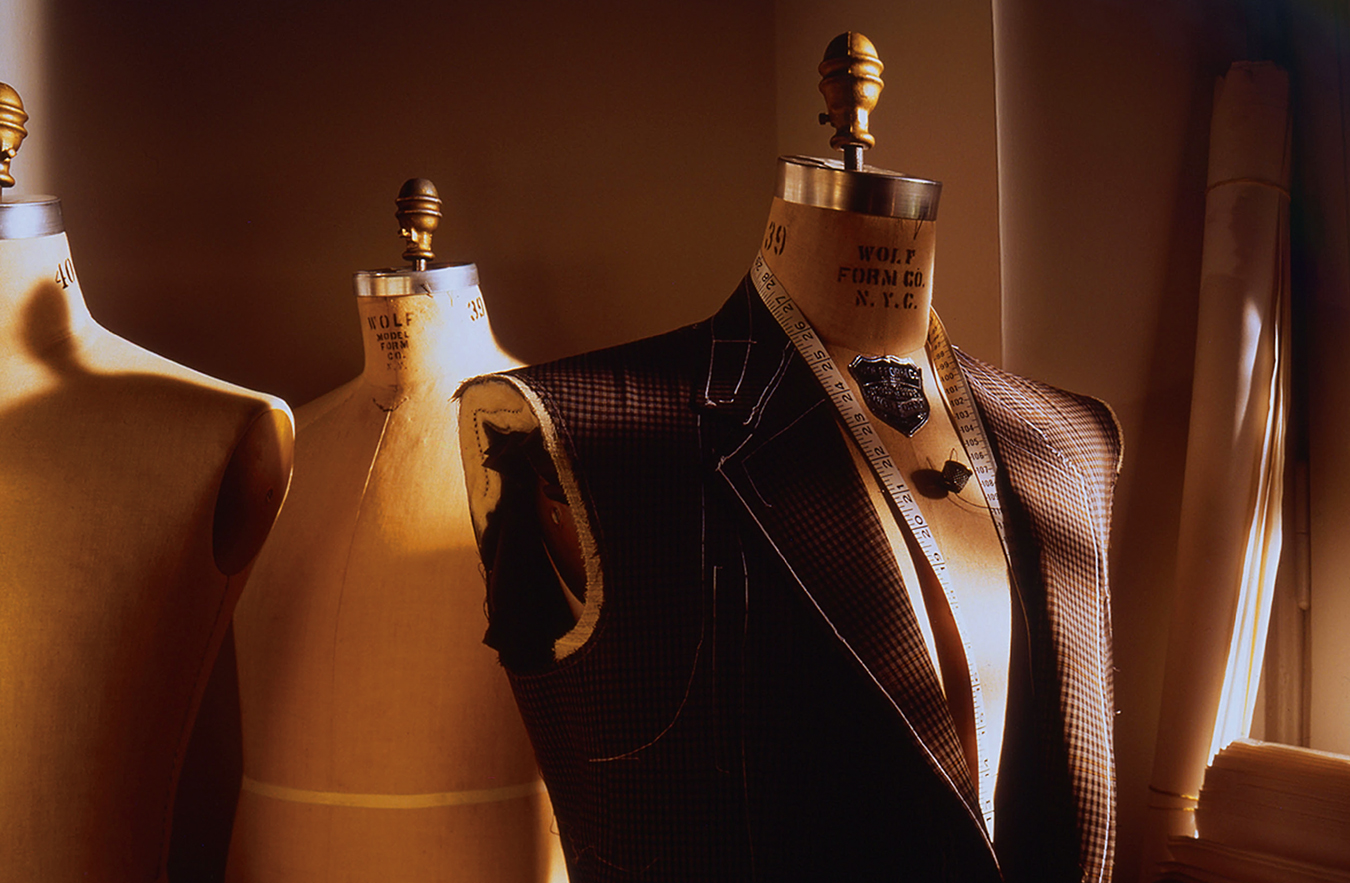
A Zegna garment in progress.
-
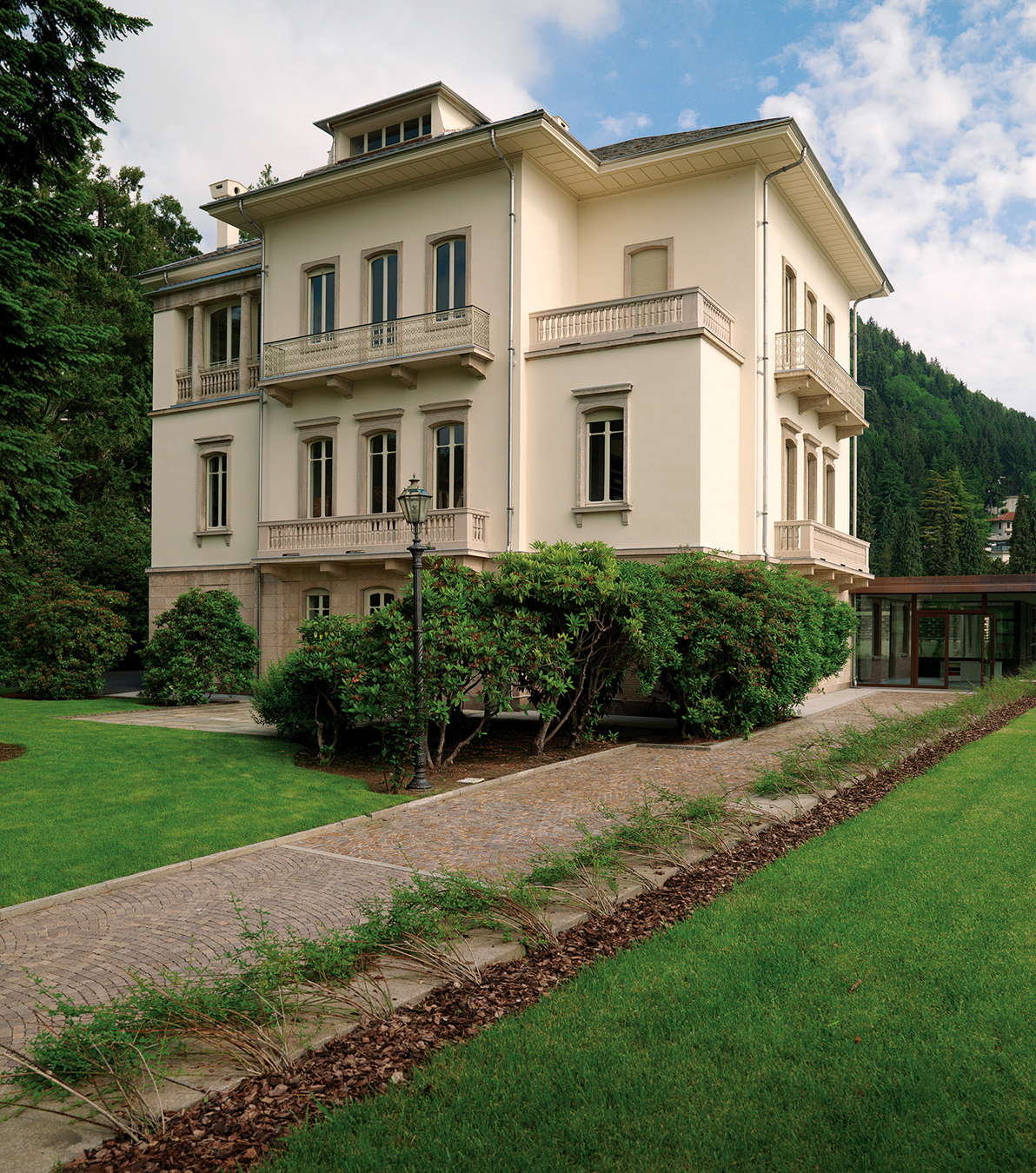
Casa Zegna in Trivero, once the family home and now a historical archive and new cultural centre.
-
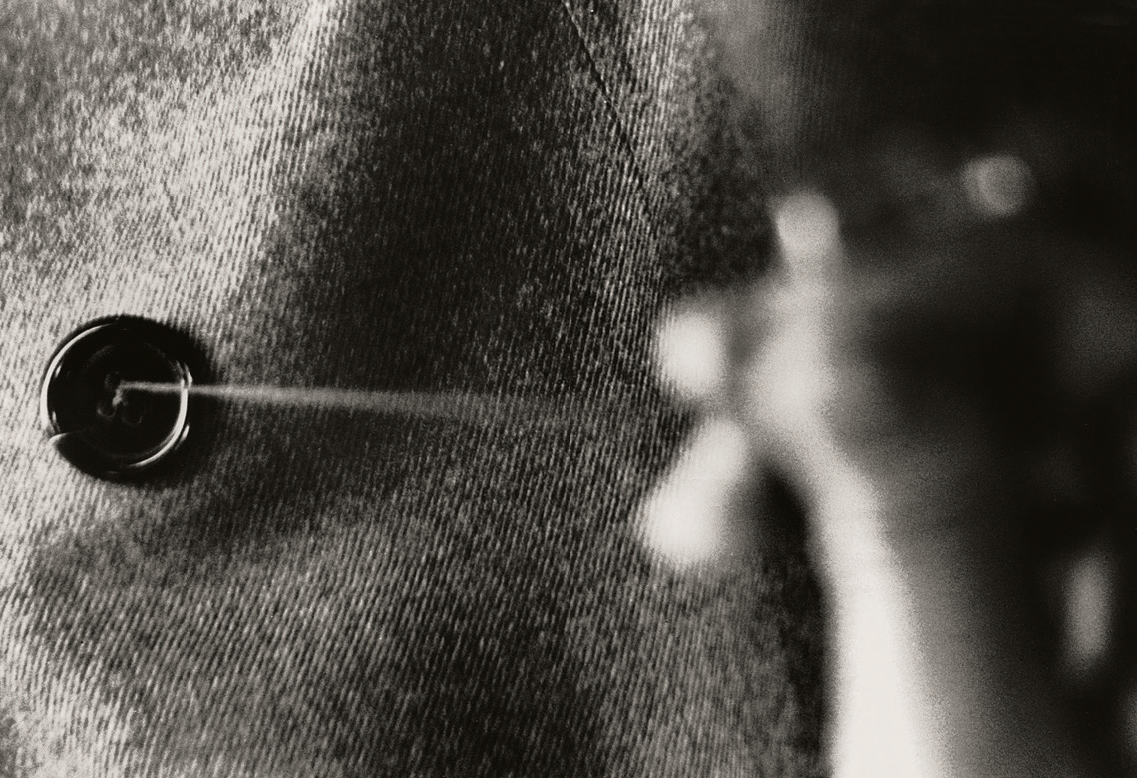
Putting the finishing touches on a Zegna suit.
-
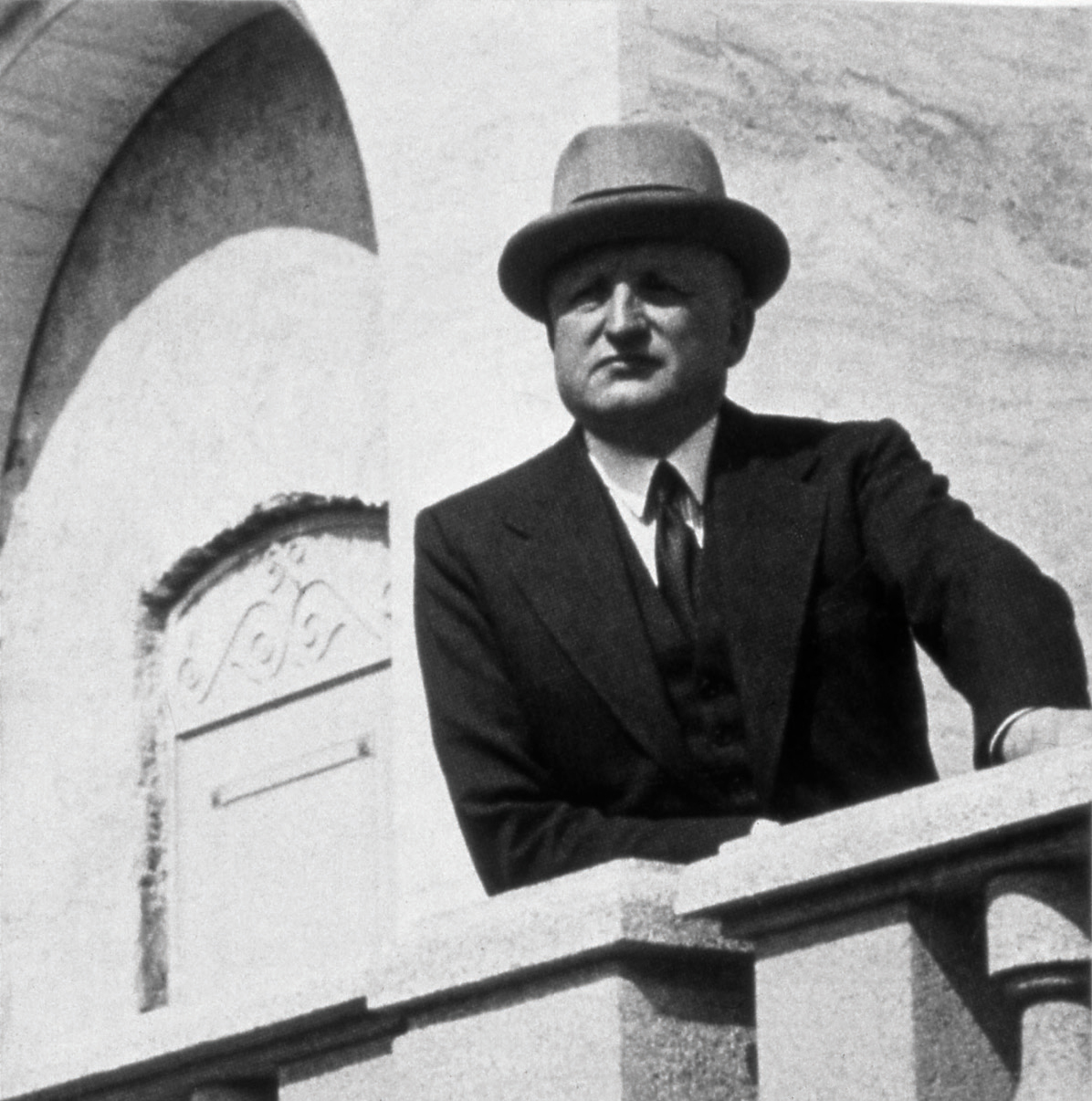
Company founder Ermeneguildo Zegna.
Ermenegildo Zegna
Suitably perceptive.
Since Roman times, textile workers have used the thistle-like head of the teasel plant to raise the nap of fine cloth. And yet the teasel heads, encased in an old wooden crate, that form part of a totemic sculpture in the archives of fabric and fashion giant Ermenegildo Zegna are more than a nod to history. Here, in the small Piedmontese town of Trivero, among the computer-controlled machines, the prickly plants still do the same work.
Celebrating its centennial in 2010, Ermenegildo Zegna continues to keep a foot firmly in the past while making some of the most advanced techno fabrics around. Each year, for instance, the company awards the Vellus Aureum (literally “golden fleece”) Trophy for the finest wool in the world, rewarding the sheep’s owner with the equivalent weight in gold; the most recent prize was 1.47 kilograms. A prize that seems to belong more to ancient mythology than the modern age, it exemplifies the company’s ethos of harmonizing the time-honoured with the contemporary, an approach founded on family values, and a profound respect for nature and ecology. Seven decades before companies leapt on the green bandwagon, the firm was already making moves to preserve the local environment: in the 1930s Ermenegildo Zegna planted half a million trees on the magnificent mountainscape that is the backdrop to the company’s production facilities and built the Panoramica Zegna, a scenic road linking Trivero to the villages beyond.
Ermenegildo, who took over the nascent textiles company from his watchmaker-turned-weaver father, was more than an entrepreneur. Besides being an ecologist long before the term existed, he was a social activist who constructed sports facilities, a hospital, and housing for his employees. The fabric business grew. Then, as traditional tailors disappeared, Ermenegildo’s sons Angelo and Aldo expanded into suit manufacturing, and then into made-to-measure. Today, six of the present generation of Zegnas—Paolo, Ermenegildo (known throughout the industry as Gildo), Anna, Benedetta, Laura, and Renata—are active in the company, with another generation waiting in the wings. Over the past four decades Ermenegildo Zegna has seen numerous additions to its portfolio (among them labels like Lanerie Agnona, maker of luxury women’s wear) and alliances with companies of similar calibre (such as YSL Beauté for perfumes and Ferragamo for leather goods). At the same time, it manufactures suits for top fashion labels like Tom Ford and Gucci. In 2008, turnover was €870.6-million, with 291 stores worldwide (not including shop-in-shops) and more than 7,000 employees. “As a global company we are well covered for all eventualities with one third of our business in Asia, one third in Europe, and the other third in the Americas,” says CEO Gildo Zegna, adding that emerging markets like China, Latin America, India, Eastern Europe, and the Middle East continue to play a key role in corporate growth.
He cites a strong spirit of teamwork, a focus on corporate rather than personal success, and slow but constant evolution as factors in the company’s achievements. “The merits of a family-driven business are numerous,” he says. “Firstly, when pursuing excellence, having your family name as the brand ensures the highest levels of devotion and drive to the cause. Being a family-owned business means that we are not subject to the demands of stakeholders, which puts us in a healthy position during these turbulent times.” He talks of the company’s foundation, laid by his grandfather in 1910 and built on by his father and uncle: “We are building the next floor, which is our responsibility to pass on to the next generation, in order for them to add another floor.”
Ermenegildo Zegna (the company) not only prefigured the green movement, it was also one of the forerunners in global commerce, as the first luxury menswear company to open in China. But however far the Zegna name journeys, it never loses sight of its fabric roots. Archetypal textile images inspired architect Peter Marino’s designs for the company’s global concept stores in Milan, New York, Tokyo, and Dubai, which use criss-crossed stainless steel rods to symbolize woven cloth. Deliberate echoes of the Trivero wool mill also infuse the company’s 90,000-square-foot Milan headquarters, which opened in 2007. Combining offices and showrooms, the building incorporates aerial walkways and sawtoothed roofline that are stylistic nods to the Trivero production facilities, while a secret interior garden pays tribute to nature. The colossal white wool apple that dominates the entrance is another link between urban and rural, the work of Michelangelo Pistoletto, whose father, Ettoe Olivero, created a frieze for the original factory.
“The merits of a family-driven business are numerous. Firstly, when pursuing excellence, having your family name as the brand ensures the highest levels of devotion and drive to the cause.”
In this ethereal steel-and-glass setting, press and clients sit down together during Milan Fashion Week, light briefly gilding profiles as photographers check flash equipment, as all await the runway presentation of the Ermenegildo Zegna lines for Fall/Winter 2009. From the instant the models step out on the runway, the colour message is focused and clear. The surprise is the invigorating shot of burgundy that infuses an otherwise classic palette of camel, mocha, and sandstone, adding punch to a pinstripe, as a vest with a caramel-coloured outfit, as corduroy pants with a black knit jacket, as patches on the black jodhpur style pants tucked into riding boots that epitomize the equestrian theme of the leisurewear. A simple zip-front fleece jacket; a black shearling three-quarter length, waist-gathered coat: these are classic, non-gimmicky silhouettes, details pared to essentials. Lightly hinting at Gatsby-era retro and Indiana Jones derring-do, these looks capture the zeitgeist in their return to the traditional—recast with an escapist edge. Quietly luxe fabrics (such as a parka in weatherproof cashmere) further unify the collection.
Behind this particular show is Zegna’s in-house team. Responsible for the design of the more casual Z Zegna line since 2002, aimed at the thirtysomething with “fantastic style and a lot of personal elegance”, is Alessandro Sartori. “The image we’re offering for this season is very sharp and modern,” he says. “It’s important to go back to masculinity,” via square shoulders, larger lapels, lower-buttoning and longer jackets, and skinny pants. There’s a nod to the nautical, and an acknowledgement of city living, with a subdued palette of light greys, charcoal, dark navy, and burgundy. “We’re also creating a lot of new silhouettes,” says the designer, such as a kimono jacket designed to tuck inside matching pants (less a response to the Asian market and “more a breath of fresh air”).
Never forget that Ermenegildo Zegna’s reputation is founded on the finest of cloth. Sartori points out the lushness of 16-ply pure silk yarn, knit into a blue-purple shawl-collared sweater, and a V-neck hoodie cut from stretch cashmere jersey. “Wear a classic suit but with a different neckline,” he advises, indicating a thin merino sweater with a miniature shawl collar that, worn either flat or up, provides the finished look of a traditional shirt sans the formality. Demonstrating how it works in real life, he teams his own blue-black suit with a pale grey turtleneck.
If Zegna has a signature look, it’s a cut that leans toward slim without being constricting. Made entirely by hand, its Couture suits are the ne plus ultra—each garment requires more than 33,000 stitches and 18 hours of craftsmanship. For Fall/Winter, a new slender silhouette and softly structured shoulders are allied with luxurious fabrics like vicuna, cashmere, and the finest wool. Redefining classical Italian style, the Sartoria Collection rethinks the conventional pinstripe this season, giving a new, but still elegant, dimension to traditional business wear. “We’re approaching the colour palette in a different way,” says Anna Zegna, the company’s image director. “It’s a coherent evolution.” The rethought pinstripe goes everywhere the classic one does, but with that small yet significant difference that marks its wearer as fashion-forward. The Italian approach of “emptying the suit of what is not important” means “a gentleman wears one of these jackets like a sweater”. Translation: not just to the office.
While Fall/Winter colours are striking, Anna is quick to point out that the collar-to-pants-cuff coordination of Zegna’s leisurewear collection is for the runway only. “You highlight the inspirations,” she says. “You don’t wear camel head to toe.” For everyday, “the components all stand on their own. Each piece could have its own life. The quilted jacket could go over khakis.” In fact, it’s an exceptionally easy season for a man to incorporate into his existing wardrobe, with the core shades of camel and burgundy marrying happily with everything from grey flannel to blue denim.
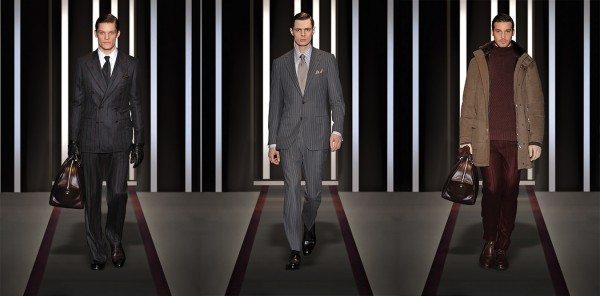
Looks from the Ermenegildo Zegna Fall 2009 Collection
Occasionally, tailoring variations are driven by practical, rather than stylistic, reasons. “My brother and I love classical music,” says Anna Zegna, explaining how Ermenegildo Zegna’s response to violinist Maxim Vengerov’s request for performance wear was a very lightweight fabric that would breathe and move with him, with a special cut to give him more room in the shoulders. Word spread, and others in the musical world approached Ermenegildo Zegna, including tenor Plácido Domingo and cellist Mstislav Rostropovich—the latter “had to embrace his instrument, so we designed a higher-cut armhole,” says Anna Zegna. For one performer so mobile his buttons literally popped, the company obliged with elastic thread.
Inevitably, conversation returns to cloth. “I am sorry more men around the world don’t use natural fibres when nature gives us such beautiful ones,” says Anna. Like all the Zegnas, she was raised around fabric; the Trivero factory was a playground where, at the age of six, nothing felt better than jumping into a huge bale of Australian wool. “Touch and feel—it’s part of your world,” she says. “I didn’t realize it but it was getting into my self. I was brought up in the middle of the mountains. Nature is essential to my life. It’s part of the DNA.”
It’s also an intriguing dichotomy. On one hand, Ermenegildo Zegna is in the vanguard of technological evolution with its High Performance Cool Effect fabric that lets dark clothing bounce back 80 percent of the sun’s rays. In another innovation, eco-friendly sportswear transforms those same rays into solar power for iPod or cell phone recharging. Meanwhile, the company continues to refine natural fibres, recently launching a new thinner and lighter superfine worsted vicuña fabric that was the outcome of working closely with sheep breeders. (Only offered to 25 customers worldwide, it is the first superfine worsted fabric in pure vicuña available on the market.)
Increasingly, better raw materials result from improving the quality of life of those who produce them. Zegna was the only menswear brand invited to participate in the Natural Fibres section launched at the 2008 Terra Madre (the Slow Food global get together) demonstrating how, just as the Slow Food movement focuses on preserving culture and small-scale farming, Zegna liaises with producers of natural fibres: in Peru, for instance, helping to preserve the vicuña. Slow cloth, if you like.
Anna Zegna also wears another hat. As president of the Zegna Foundation (an organization independent of the Ermenegildo Zegna company) she oversees a large number of environmental, cultural, social, and scientific initiatives, carrying on a family tradition that began when her grandfather reshaped the mountainside into a more pleasant place to live. Because her family’s is a global brand, she says, the Foundation, begun in 2000, takes a worldwide approach to helping: African Medical and Research Foundation’s Water and Health Program in Kenya, the Mariinsky Theatre in St. Petersburg, women in India learning to operate looms, a children’s hospital in China. Closer to home, it donated 500,000 crocuses.
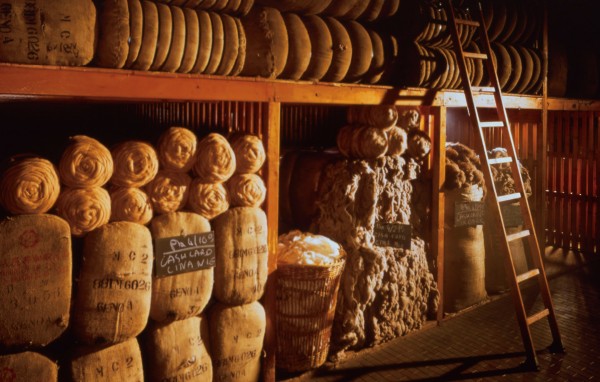
Wool stored at the Zegna factory.
Forty minutes outside Milan, the route leaves the autostrada to wind 32 kilometres through a river valley to the community of Trivero, where apricot, citrus, and ochre houses cluster around a tall-towered church against a background of Alpine peaks, terrain that calls out for exploration. In 1993 the Zegna family created the Oasi Zegna, an environmental enhancement project covering close to 100 square kilometres along the Panoramica Zegna with the goal of protecting the alpine environment and making it more accessible to visitors. Marked trails, educational signage, holiday farms selling local products, and, in winter, skiing facilities all help link visitors with nature.
At Trivero, Anna Zegna’s cousin, Laura, looks after environmental projects and the company’s archives housed in Casa Zegna, a 1930s building that was once the family’s home. “You have to imagine that when [my grandfather] started the big dream about the mountain, it was completely bald,” she says—its slopes had been denuded for heating fuel. “He planted half a million conifers and also wanted to develop nature. So he built a road that led from the village so that people from the plain could enjoy the mountain. Grandfather also planted hundreds of rhododendrons. It’s a spectacular sight in spring. As a family, we go on trying to make the mountain alive.”
Hand, mind, product, and environment are the cornerstones of the company.
In the archives, fabric samples and fashion drawings inspire the next generation. A wealth of other research material includes a menu from a dinner held in New York in 1938 commemorating Ermenegildo Zegna’s visit to launch textiles to the Professional Italian Tailors of America, as well as swatches from the 1920s and ’30s for armed forces uniforms, and a 1954 notebook listing salaries in Zegna’s own precise handwriting.
Just steps away is where fibre becomes fabric—2.5 million metres annually—and where bins hold luxurious raw materials such as cashmere, so improbably soft that touching it is like sticking your fingers into butter. Selective breeding has led to thinner wool, and the current record among Golden Fleece winners are fibres measuring 10.3 microns (for comparison, a human hair averages 50 to 60 microns).
Here is the journey from fibre to yarn to loom that culminates in the finishing processes collectively known as nobilitazione—the word ennobling is a loose translation. Some treatments are by machine, one uses the age-old teasel. The final step of quality control involves an operator using a machine called—appropriately—a Tribunale. The human eye is at its most perceptive. Elsewhere shuttles fly at blurred speed and dyes are mixed by computer, but here at the Ermenegildo Zegna factory, they tell you human know-how is so precious that no machine can ever be as valuable.




